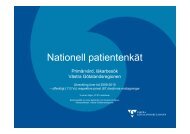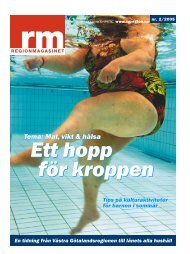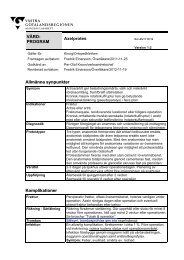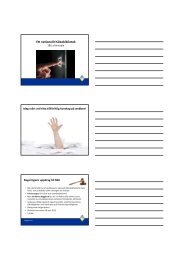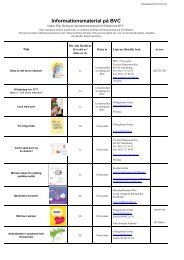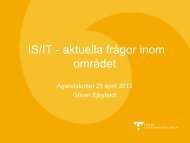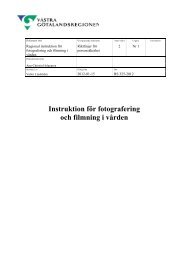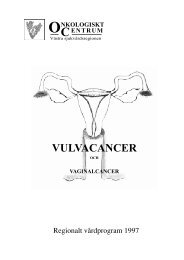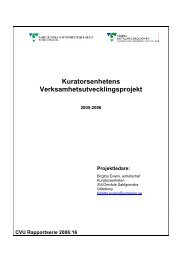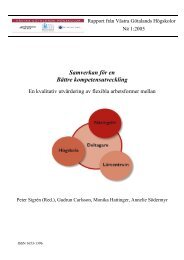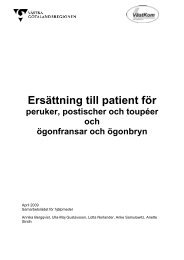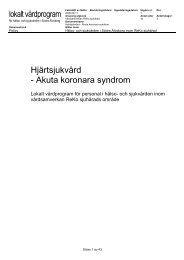FOURTEENTH ANNUAL EUROPEAN PRESSURE ULCER ...
FOURTEENTH ANNUAL EUROPEAN PRESSURE ULCER ...
FOURTEENTH ANNUAL EUROPEAN PRESSURE ULCER ...
You also want an ePaper? Increase the reach of your titles
YUMPU automatically turns print PDFs into web optimized ePapers that Google loves.
Wednesday August 31st<br />
Proceedings of the 14th Annual European Pressure Ulcer Meeting<br />
Oporto, Portugal<br />
Pressure Ulcer Prevention<br />
Evidence- Based tool development and tailored implementation to improve clinical practice<br />
Introduction<br />
Dimitri Beeckman 1,2,3*<br />
1* King’s College London, UK, Dimitri.Beeckman@UGent.be<br />
2 Ghent University, Belgium, 3 Artevelde University College, Belgium<br />
Pressure ulcers are a significant problem for patients<br />
and healthcare professionals in many different<br />
healthcare settings. Pressure ulcer prevention requires<br />
an interdisciplinary approach to care. Prevention<br />
guidelines are widely developed to reduce the<br />
variations in care, to improve patient outcomes, and to<br />
reduce costs. However, implementing these guidelines<br />
is complex and the use of guidelines is not always<br />
reflected in the actual care patients receive.<br />
Aim<br />
The first aim of this research was to study knowledge<br />
and attitudes of nurses regarding pressure ulcer<br />
prevention. The second aim was to get a more in<br />
depth understanding of the complexity of pressure<br />
ulcer classification and differentiation between<br />
incontinence- associated dermatitis (IAD). The third<br />
aim was to study the effectiveness of a tailored<br />
implementation intervention to enhance pressure ulcer<br />
prevention in nursing homes.<br />
Overview of studies<br />
A cross-sectional multi-centre study was designed to<br />
explore the relation between knowledge, attitudes, and<br />
the application of adequate prevention in Belgian<br />
hospitals [1]. Previously developed and validated<br />
instruments were used in this study [2, 3]. The results<br />
showed that the knowledge of the participating nurses<br />
about pressure ulcer prevention was poor. Only half of<br />
the nurses showed satisfactory attitude scores. The<br />
application of adequate prevention was significantly<br />
correlated with the attitudes of the nurses. This study<br />
also indicated that pressure ulcer prevalence and the<br />
application of adequate prevention in patients at risk<br />
did not improve over the last years.<br />
A European study about the inter-observer reliability of<br />
the European Pressure Ulcer Advisory Panel<br />
classification system showed that pressure ulcers<br />
were often classified incorrectly [4]. Only a minority of<br />
nurses reached a substantial level of agreement.<br />
Problems were more obvious in superficial pressure<br />
ulcers. Furthermore, the differential diagnosis between<br />
IAD and pressure ulcers appeared to be complicated<br />
[5].<br />
A randomized controlled trial was set up to evaluate<br />
the effectiveness of the Pressure Ulcer CLASsification<br />
education tool (PUCLAS) on classification and<br />
42<br />
differentiation skills by nurses [6]. PUCLAS is a tool to<br />
teach and learn about pressure ulcer classification and<br />
IAD differentiation. Attending PUCLAS improved<br />
pressure ulcer classification and IAD differentiation<br />
significantly. Furthermore, a study about the<br />
effectiveness of the ‘PUCLAS2’ e-learning program<br />
showed similar positive results [7].<br />
The effectiveness of multi-faceted tailored made<br />
implementation of a computerized patient-tailored<br />
pressure ulcer prevention protocol was tested in a<br />
randomized-controlled trial. The tailor made strategy<br />
included interactive education, reminders, monitoring,<br />
feedback and the introduction of leadership [8]. During<br />
the 16 weeks of implementation, a significant positive<br />
effect was observed on the allocation of adequate<br />
pressure ulcer prevention in residents at risk when<br />
seated in a chair. There was no effect on the<br />
prevalence of pressure ulcers and on the knowledge of<br />
the professionals. While baseline attitude scores were<br />
comparable between both groups, the mean score<br />
after the intervention was significantly higher in the<br />
experimental group than in the control group.<br />
Conclusion<br />
The journey to Evidence- Based Practice in pressure<br />
ulcer prevention is long. Major efforts are made to<br />
develop practice guidelines. More effective<br />
implementation methods should be developed and<br />
based on the barriers experienced by clinicians trying<br />
to incorporate the guidelines into clinical practice. An<br />
intensive collaboration between policy makers at<br />
different levels, clinicians, researchers and the industry<br />
is needed to realize these goals.<br />
Acknowledgements<br />
I would like to warmly thank Tom Defloor † and Katrien<br />
Vanderwee (Ghent University, Belgium) for<br />
supervising this research between 2006 and 2011.<br />
References<br />
[1] Beeckman D. et al., Worldviews Evid Based Nurs.<br />
doi: 10.1111/j.1741-6787.2011.00217.x., 2011<br />
[2] Beeckman D. et al., Int J Nurs Stud. 47:399-410,<br />
2010<br />
[3] Beeckman D. et al., Int J Nurs Stud. 47: 1432-41,<br />
2010<br />
[4] Beeckman D. et al., J Adv Nurs. 60: 682-91, 2007<br />
[5] Beeckman D. et al., J Adv Nurs. 65: 1141-54,<br />
2009<br />
[6] Beeckman D. et al., Qual Saf Health Care. 19:e3,<br />
2010<br />
Copyright © 2011 by EPUAP



